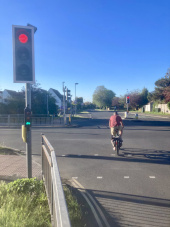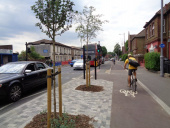Pedalling Ahead: Our Cycle Strategy

Document type:
Publisher:
Executive Summary
This document is effectively an appendix to West Sussex County Council's Transport Plan 2006-2016 (LTP2), detailing what the County Council plans to do for people who wish to travel by bicycle for local trips.
The document contains much that is good, and it would have been excellent had WSCC actually followed the ideas contained within it.
Comments
The document starts by reminding us what the WSCC transport objectives are. All four are directly related to cycling levels in the county:
This is our third edition of Pedalling Ahead, our policy document on cycling, which was last reviewed and published in July 2000. It is part of the West Sussex Transport Plan 2006-2016 (WSTP), a ten-year document demonstrating how West Sussex County Council will plan, commit and spend funds provided to it by central Government on transport schemes across the county. The WSTP sets out the following key transport objectives for the whole county:
- Tackling congestion, particularly modal shift from shorter distance car journeys by encouraging cycling and walking.
- Delivering better accessibility to services and to public transport;
- Achieving safer roads, which will make cycling more attractive;
- Reducing pollution, particularly by reducing short car trips, which are particularly polluting as catalytic converters do not have time to warm up or function on short journeys;
The document explicitly mentions a cycling infrastructure budget from WSCC:
To promote and deliver improvements for cycling to residents, we will use a number of the resources available to us. These include the following:
- A cycle route construction budget;
- ...
In recent years WSCC has been reluctant to spend money from its own budgets on cycle infrastructure. Cycling facilities are always only built "when funding is available", in other words WSCC themselves will not provide funding.
(For those interested in the controversial issue of cycle helmets, the document has an interesting statement in the "Stop doing" column: "Requiring children to wear helmets for cycle training". The opposite would be considered these days.)
- Log in to post comments




